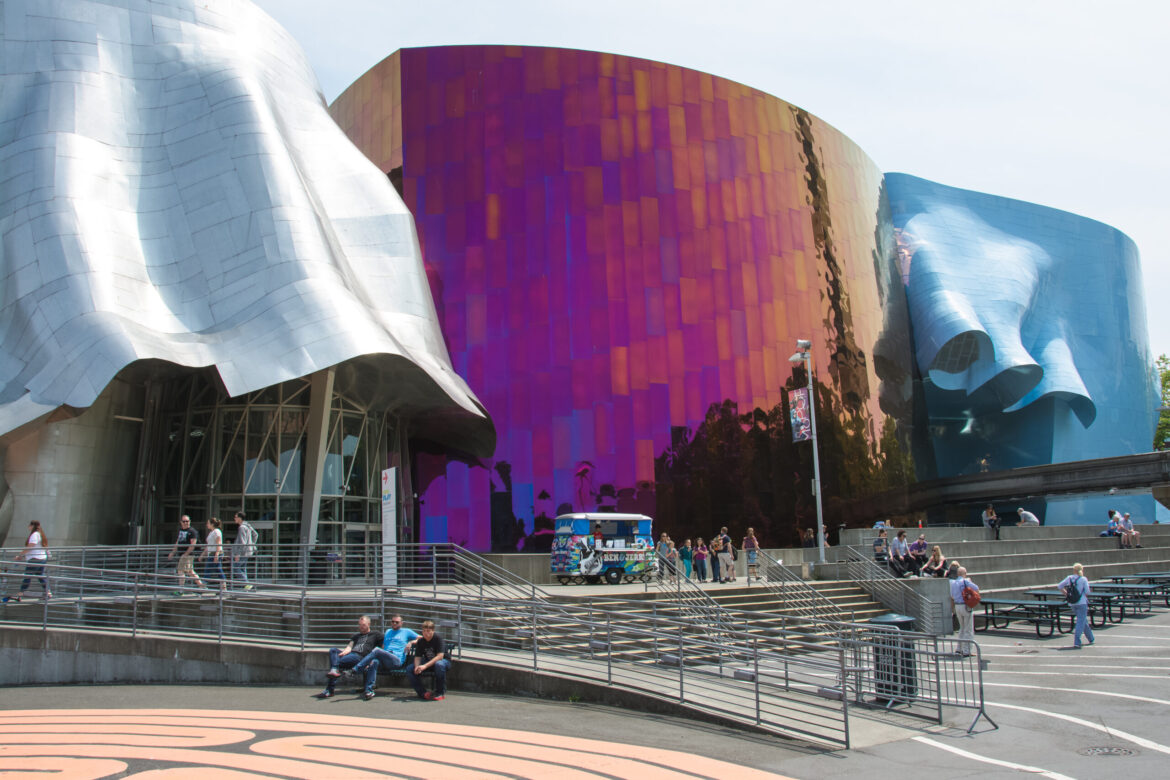
Frank Gehry’s “Experience Music Project” Building in Seattle, Washington (now MoPoP)
The Experience Music Project (now the Museum of Popular Culture) located in Seattle, Washington, was designed by world famous architect, Frank Gehry and was completed in 2000. The project was commissioned by Microsoft cofounder Paul Allen. It was to be a tribute to the Seattle rock legend Jimi Hendrix and to American music in general.
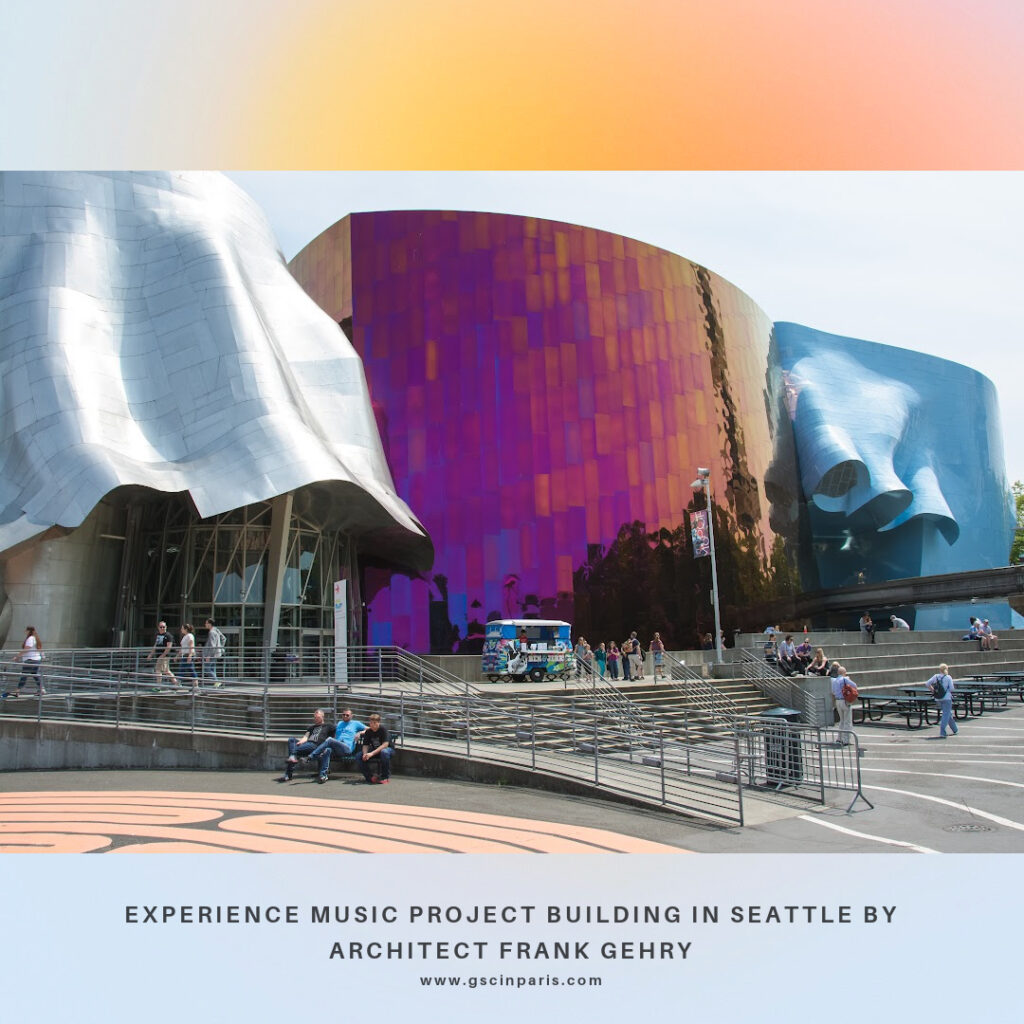
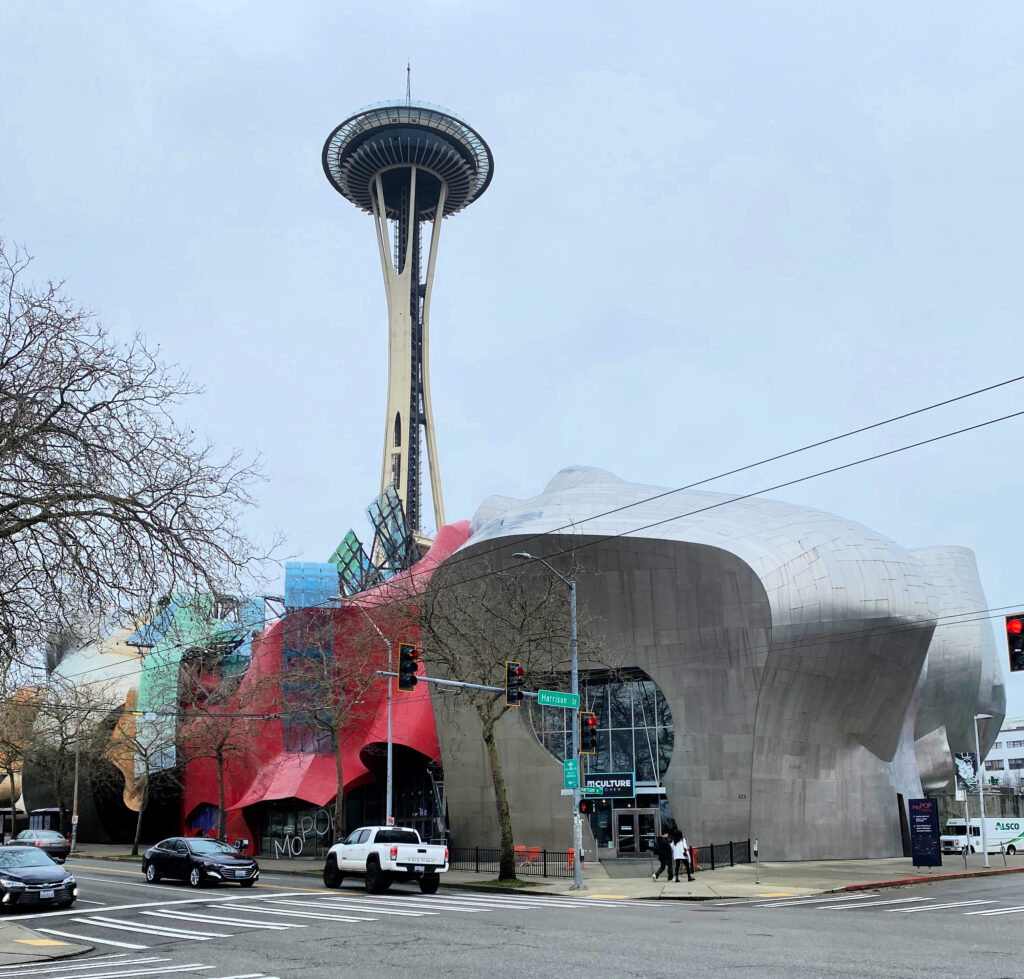
“Architect Frank O. Gehry has made a career out of bending vertical and horizontal lines of building construction into something defiant and sometimes poetic. With Seattle’s EMP, opened just over a week before the Fourth of July, he has met his perfect client in (Paul) Allen and his metaphorical match in rock-‘n’-roll. The resulting architecture is a unique performance and a new landmark on the edge of the Seattle Center.”
— Clair Enlow, “Frank Gehry Rock Temple“, in ArchitectureWeek No. 9, 2000.0712
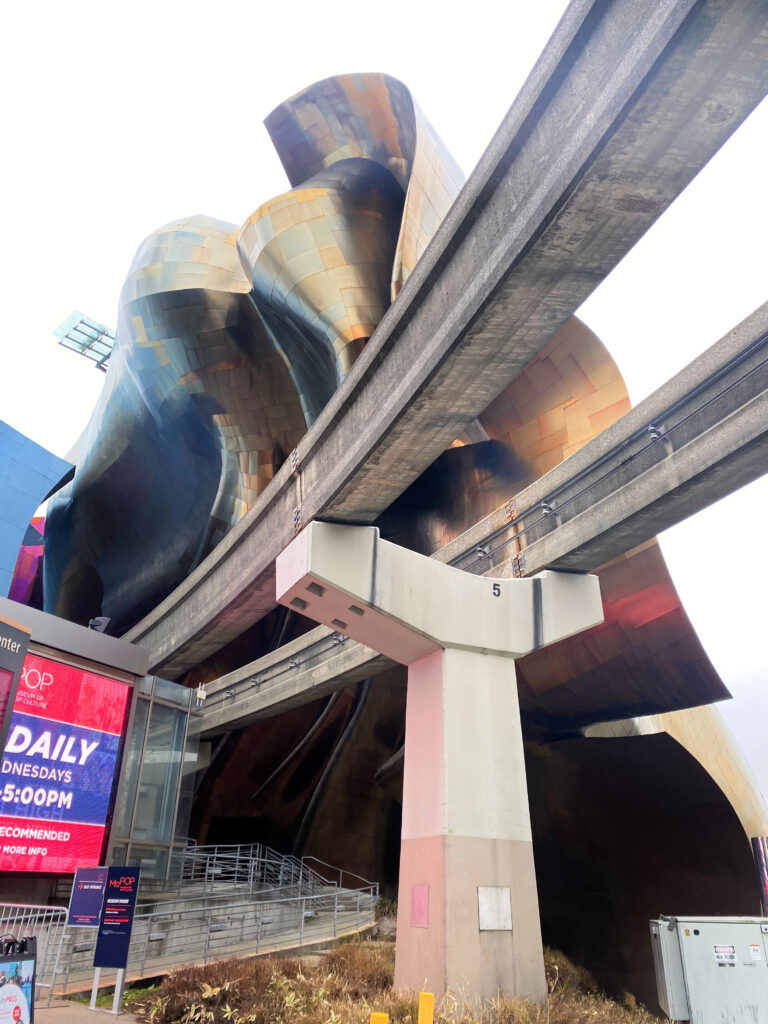
Exterior of Gehry’s Experience Music Project building (now MoPop)
Circling the exterior, not one single angle or view of the building is the same as another. Colors change, the curves and shapes shift, the whole mood changes. There are three thousand panels made up of 21,000 individually cut and shaped stainless steel and painted aluminum shingles. Like a snowflake, each shingle is unique, allowing the whole building to become a fluid, moving masterpiece. Each shingle responds to different light conditions. On the day I visited, it was a typical Seattle gray sky, so the reflective qualities of all of those panels weren’t as strong as if it had been a blue-sky day. The undulating shapes, the changing colors, the difference in views from each angle all were intended to convey the dynamic energy and creativity of music which is constantly evolving.
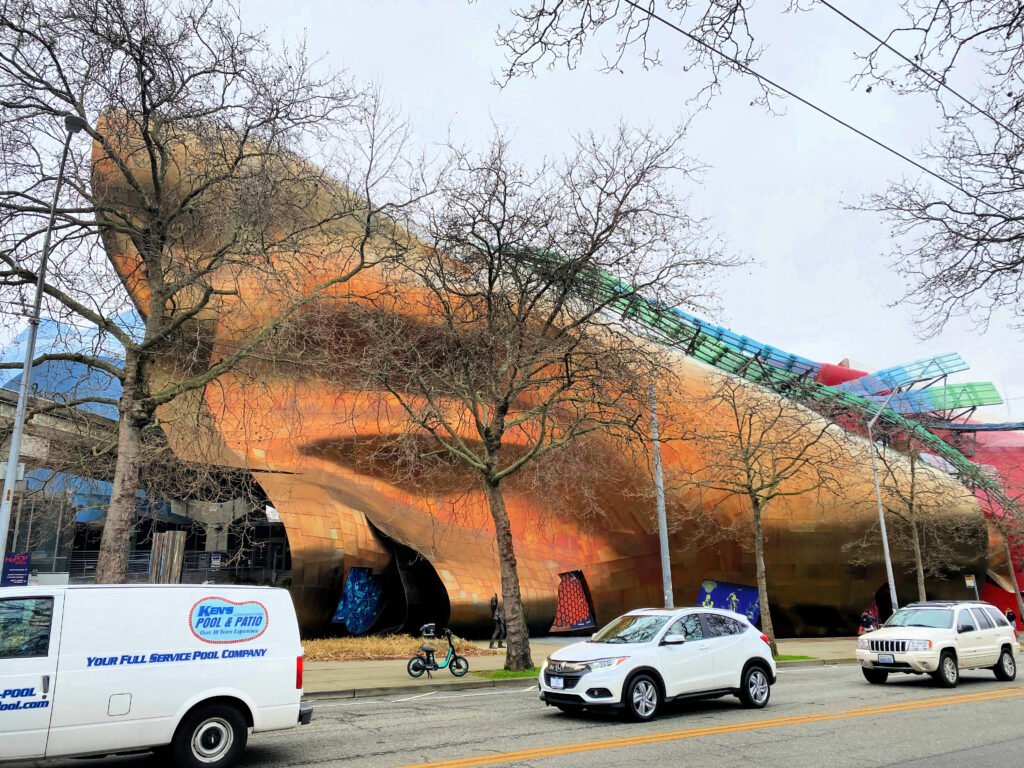
A Quintessential Frank O. Gehry Building
The building was commissioned in 1995 and was completed in 2000. Interestingly, in architecture history, this was right after the successful completion of Gehry’s very famous Guggenheim Museum in Bilbao, Spain. After the completion of that building, everyone in the world was seemingly lining up for a Gehry building of their own. The EMP building (now the Museum of Pop Culture or MoPoP) has many of the typical Gehry characteristics of his other works like the Guggenheim or the Walt Disney Concert Hall, but it also is unique in its use of color and various finishes.
In the EMP, the viewer finds stainless steel in mirrored purple, lightly brushed silver and bead-blasted gold, while the aluminum features are in red and blue. The building was supposedly inspired by a smashed guitar, in honor of Seattle’s Jimi Hendrix and his rebellious style. The story goes that Gehry and his staff played around with chopped up Fender Stratocasters and rearranged the pieces during the design process.
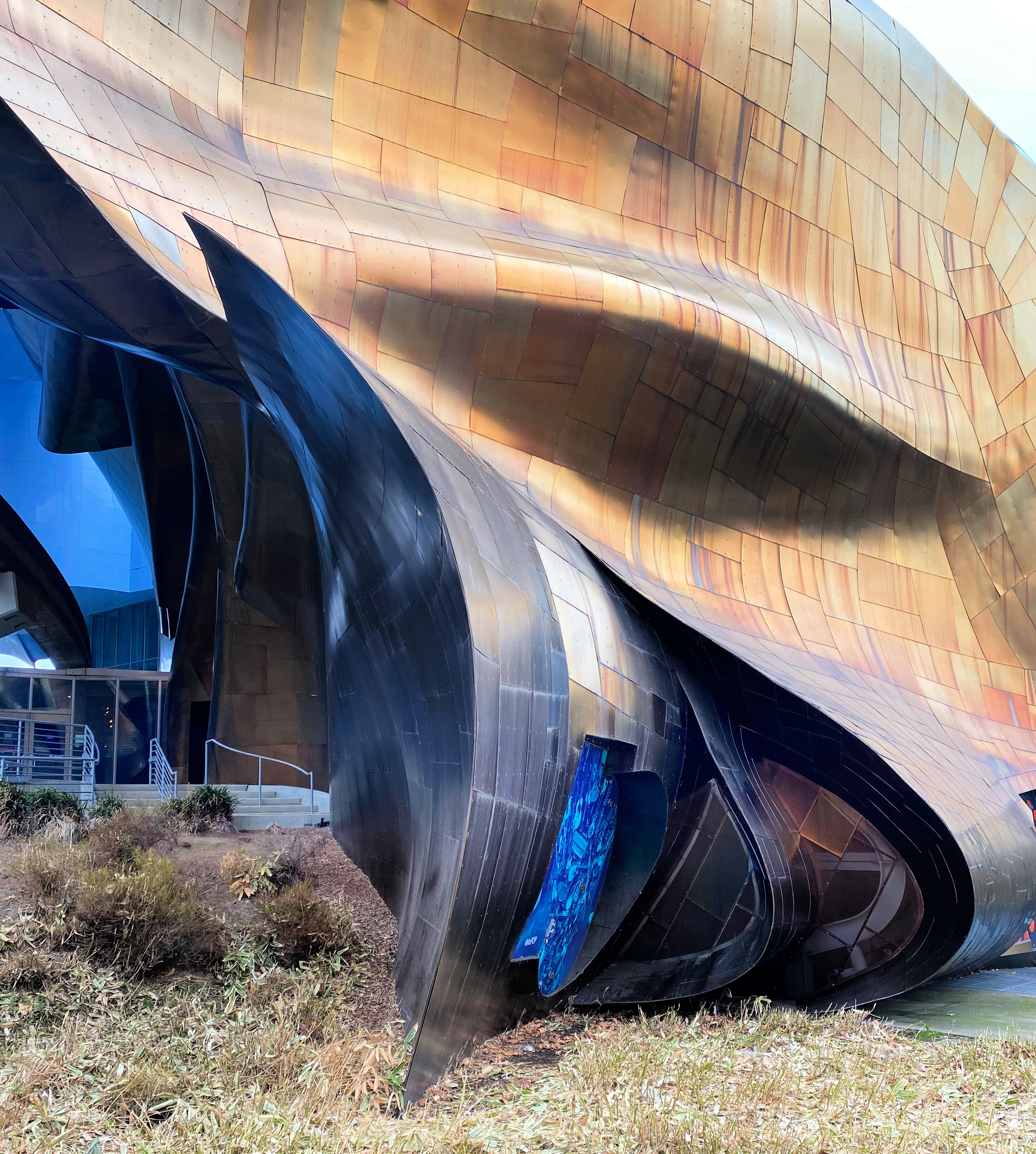
According to MoPop’s website, “When Frank O. Gehry began designing the museum, he was inspired to create a structure that evoked the rock ‘n’ roll experience. He purchased several electric guitars, sliced them into pieces, and used them as building blocks for an early model design.” (Source: www.mopop.org)
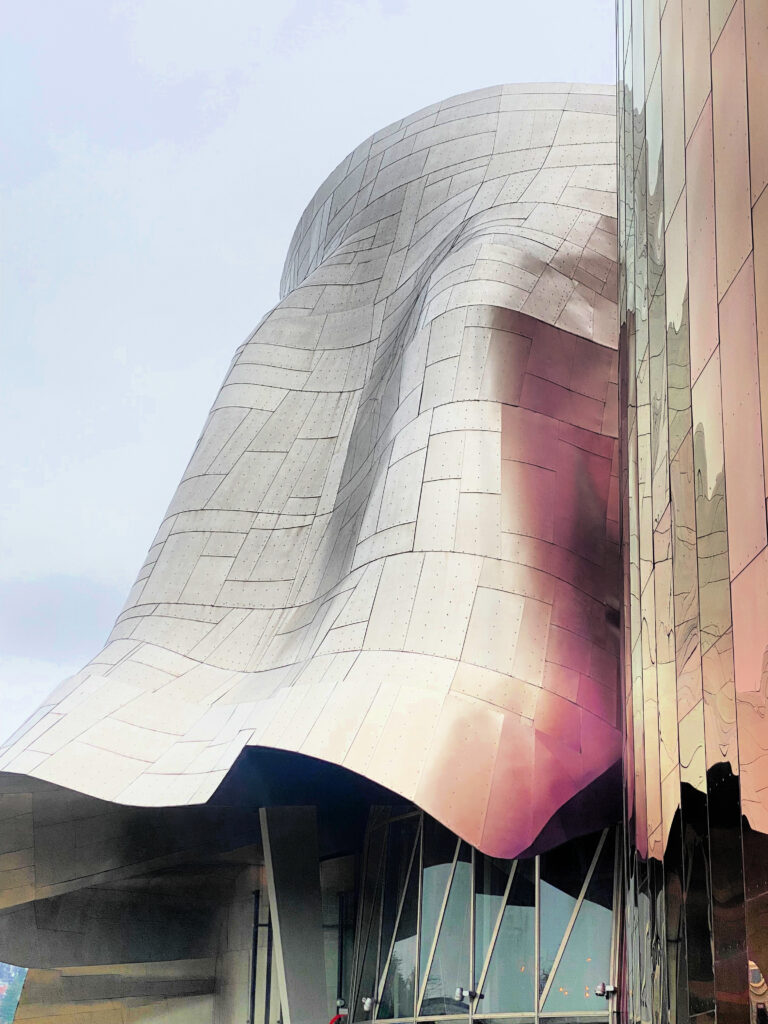
Reaction to the Building
The building elicited a wide range of responses from the architecture community, Seattle residents and the world. Some people find it to be an absolute monstrosity. Others appreciate its uniqueness and feel Seattle needed such a building to shake up its otherwise (at the time) monotonous architectural cityscape. Having seen several of Gehry’s masterpieces, including the Walt Disney Concert Hall in Los Angeles and the Fondation Louis Vuitton building in Paris, the EMP building doesn’t come close to the grandeur and elegance those two buildings exude. The Seattle building seems messier, a bit hastier put together.
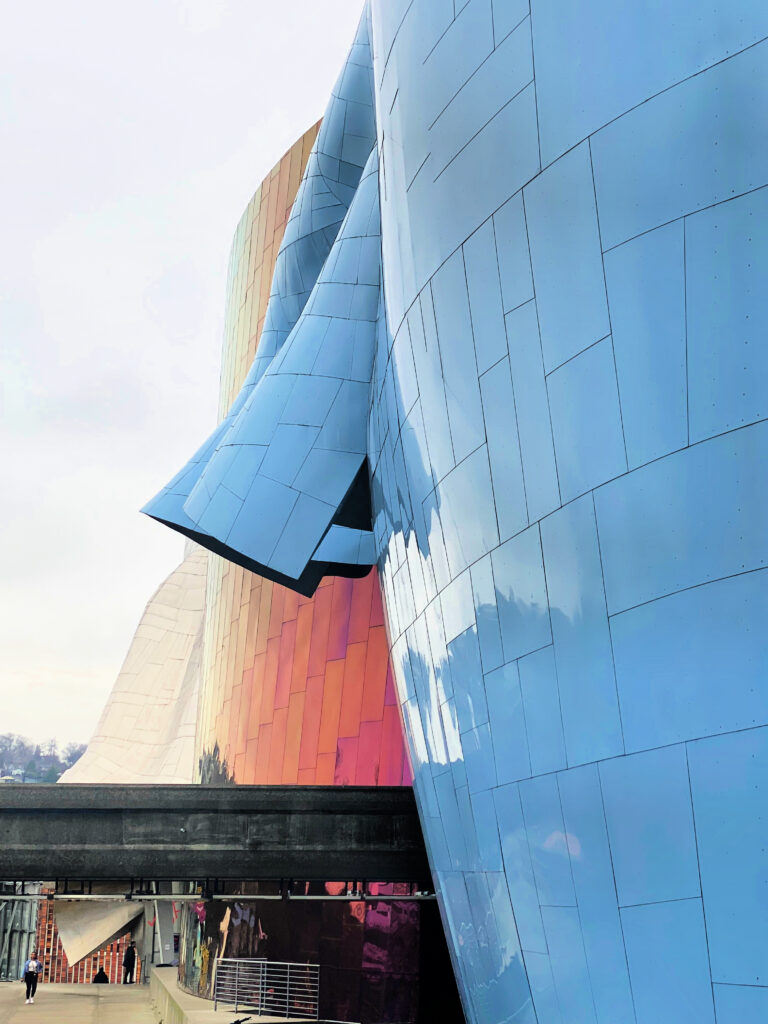
Technology and Design
Apparently, Gehry went through three full iterations of the building before Allen approved. The first design was too literal a depiction of an electric guitar – a quintessential post-modern habit of architects at the time. The final version was more abstract, but you can still see the guitar in the funky ‘frets’ on top of the building. Just as the Renaissance sculptors could create flowing fabric out of hard marble, Gehry is a master at creating movement in an object as stubbornly inanimate as a building. Another amazing feature of the building is the intricate amount of detail went into all 21,000 panels. At the time, there were few fabricators and Gehry partnered with Catia, a French 3-D design firm that originally specialized in aerospace design.
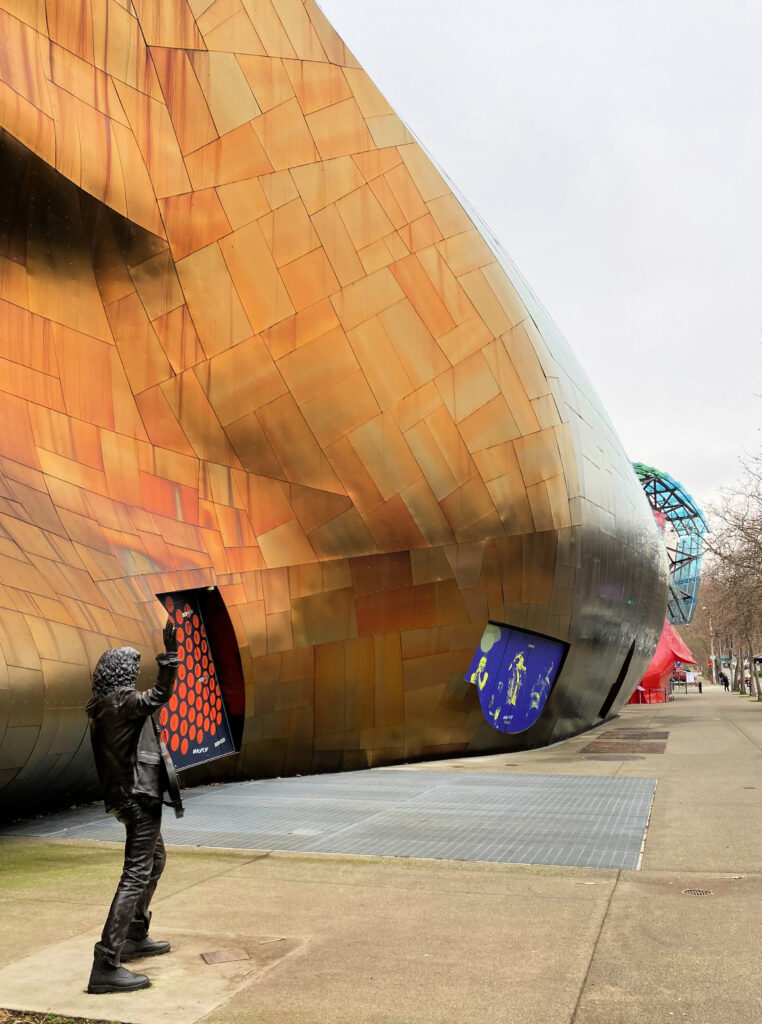
The EMP building was an enormous leap in customized design, which allows for curves and unique angles in buildings that so many architects have adopted since Gehry pioneered the process. When you can appreciate the technological innovation at the time and the design process, you can appreciate the building, even if aesthetically, it’s debatable.
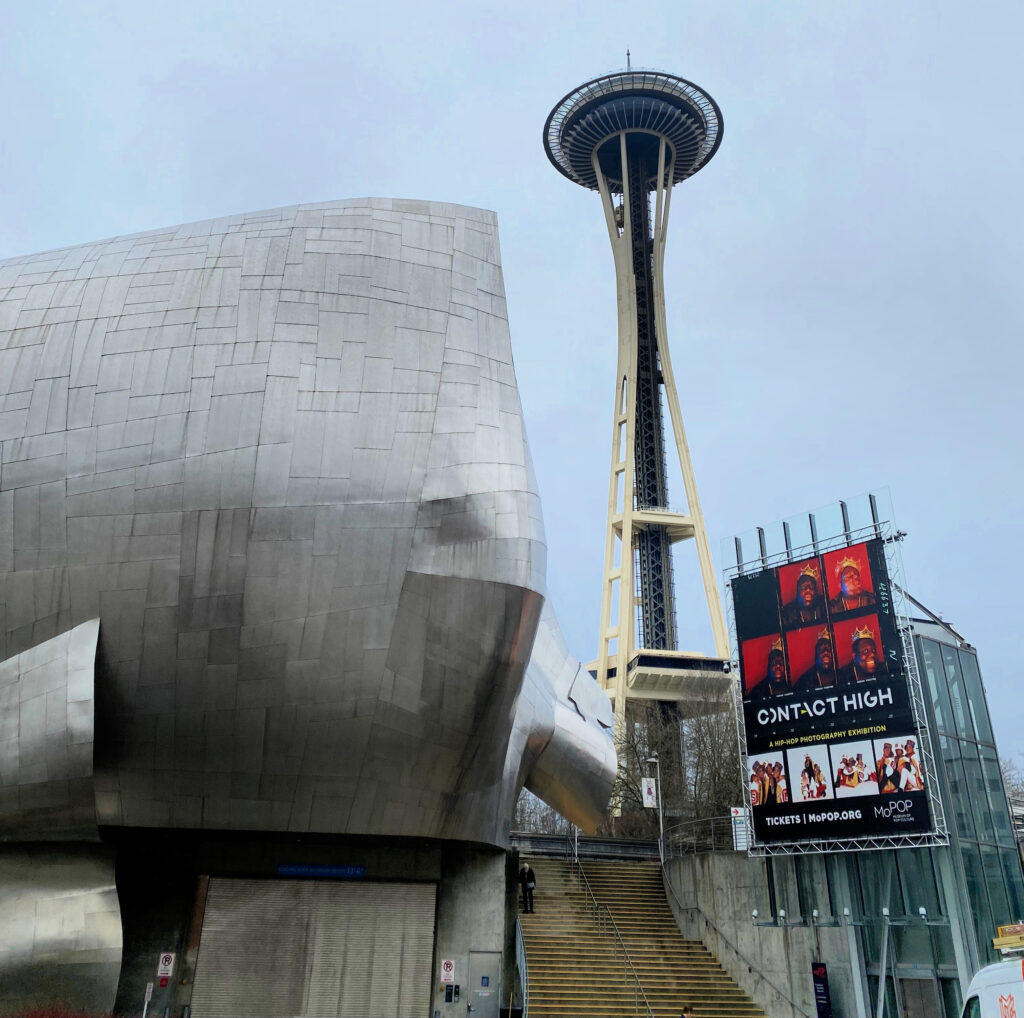
Interior of the Experience Music Project Building
As for the inside, any fan of pop music, American music, grunge or the Seattle music scene will be excited. There are two permanent exhibitions worth noting. One exhibit is a detailed look at the life and career of Jimi Hendrix. The other portrays the history of Nirvana and lead singer Kurt Cobain. Both Hendrix and Nirvana were children of Seattle. Both put the Pacific Northwest on the map for exciting and incredible innovations in music. The interior is more organized than the exterior but amplified with lights and a fun, pop soundtrack.
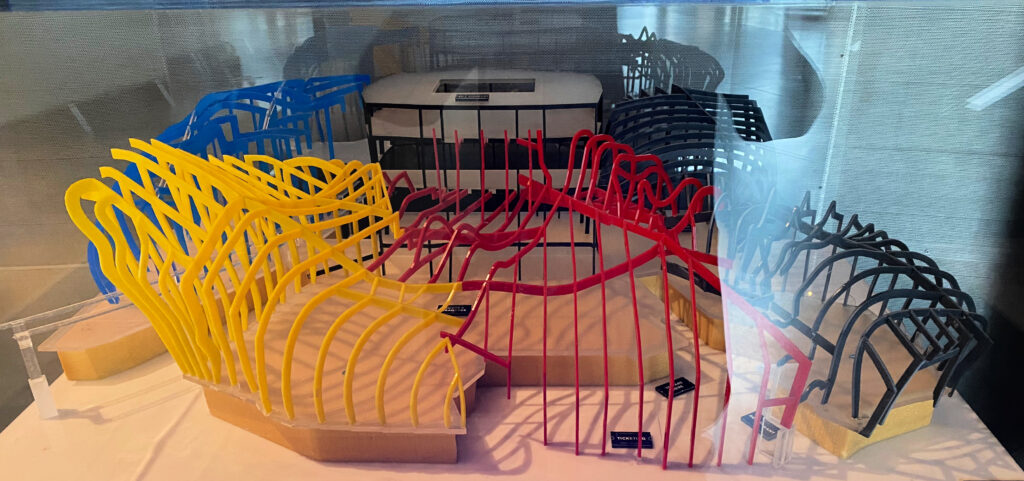
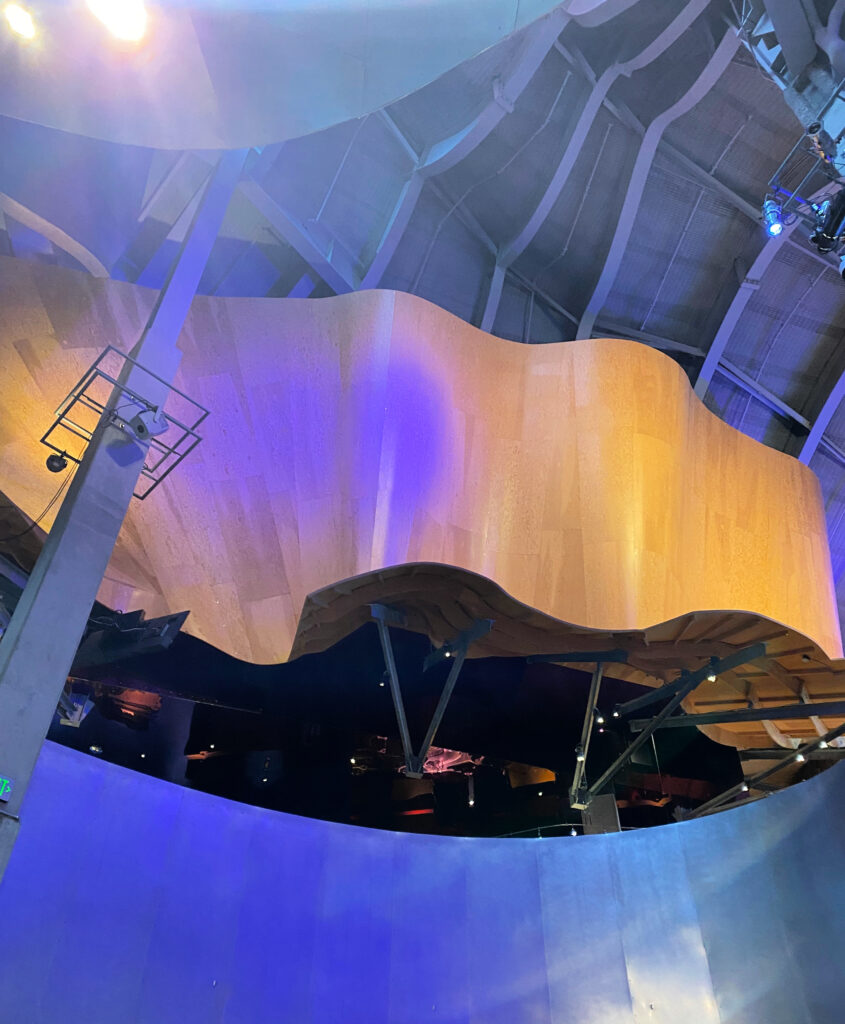
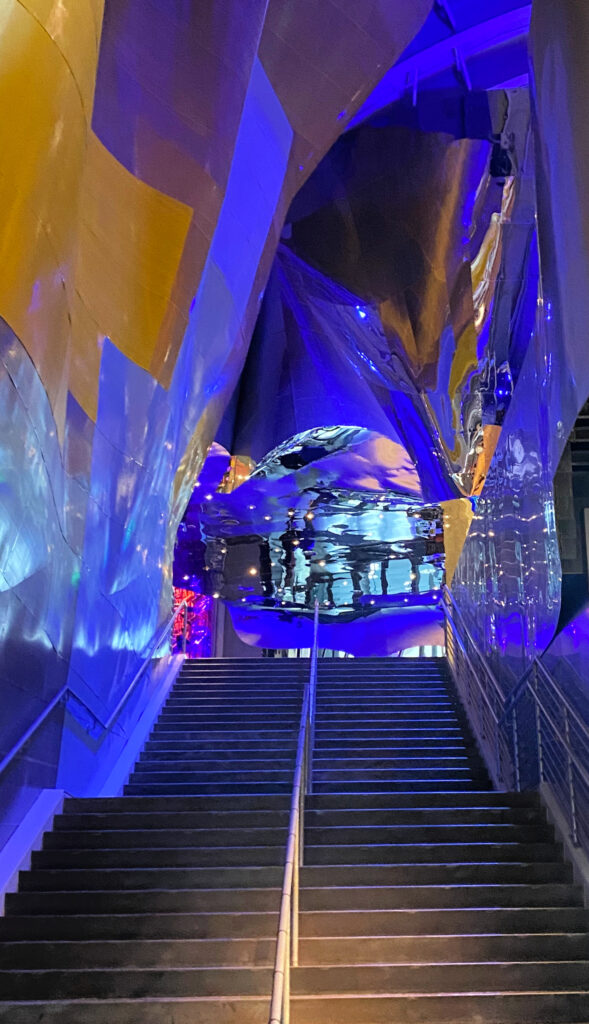
The exhibitions are full of fascinating details, from guitars, to concert memorabilia, to doodles on a cocktail napkin. There is a room full of guitars owned by famous musicians from country to metal to everything in between.
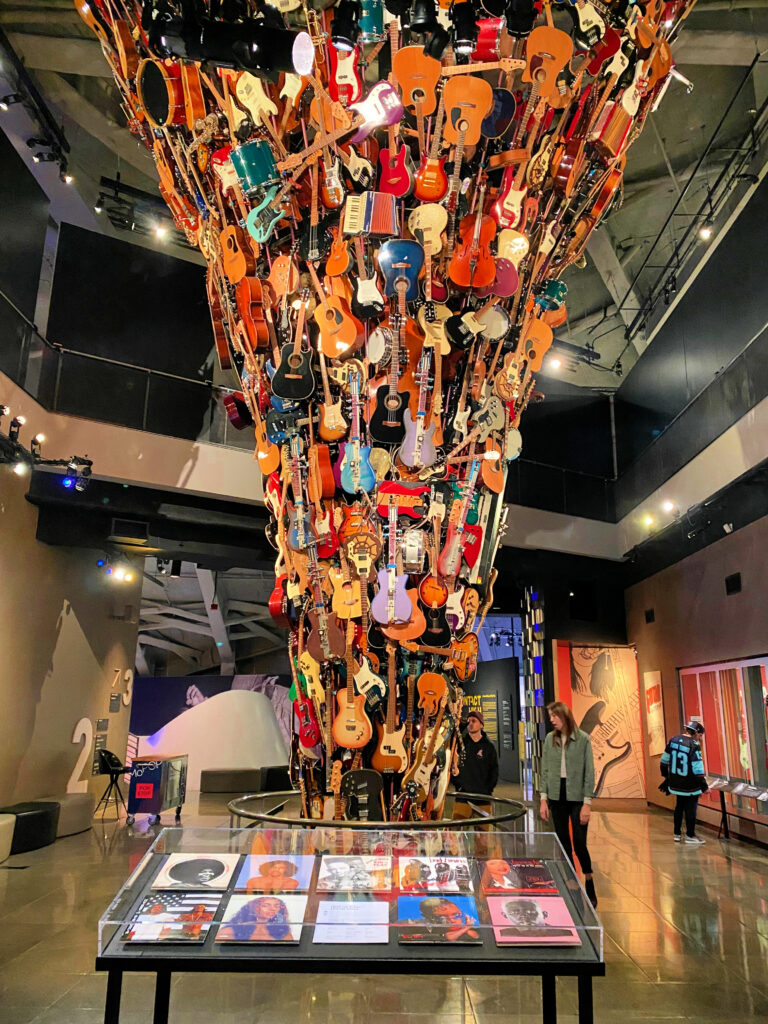
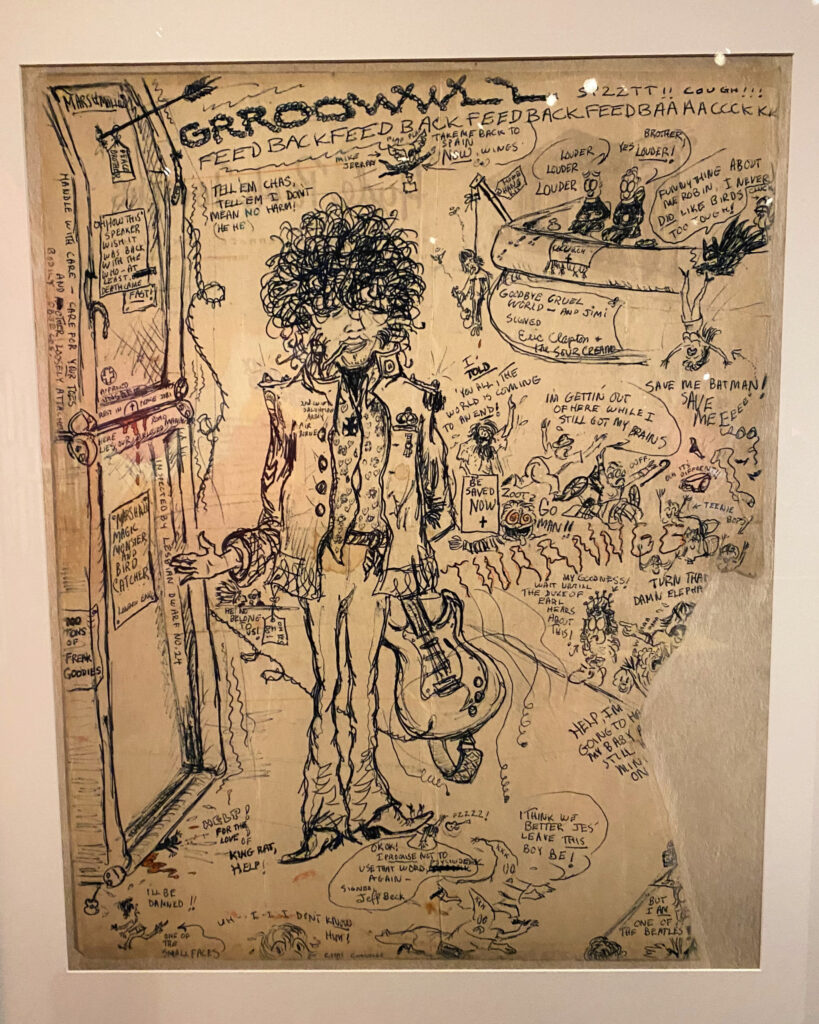
There are a couple other exhibits dedicated to other areas of pop-culture like Sci-fi, but I didn’t visit those. There are rotating exhibitions, as well. When I visited, there was a fascinating and wonderfully produced show on American Hip-Hop, called “Contact High”. The souvenir shop has a large selection of records. It is worth a visit on its own if you are an album collector. There is a lovely little café and bar to enjoy post visit. And since it is right at the foot of the Seattle Space Needle, it is well worth the trip.
If you enjoyed reading this, you may enjoy the following:
Passionate about Paris’ Fondation Louis Vuitton: a ‘Magnificent Vessel’
Perched Above the Desert: The Cree House by Albert Frey
The Vienna Secession Building and Gustav Klimt’s “Beethoven Frieze”
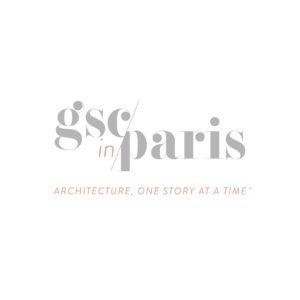
Leave a Reply